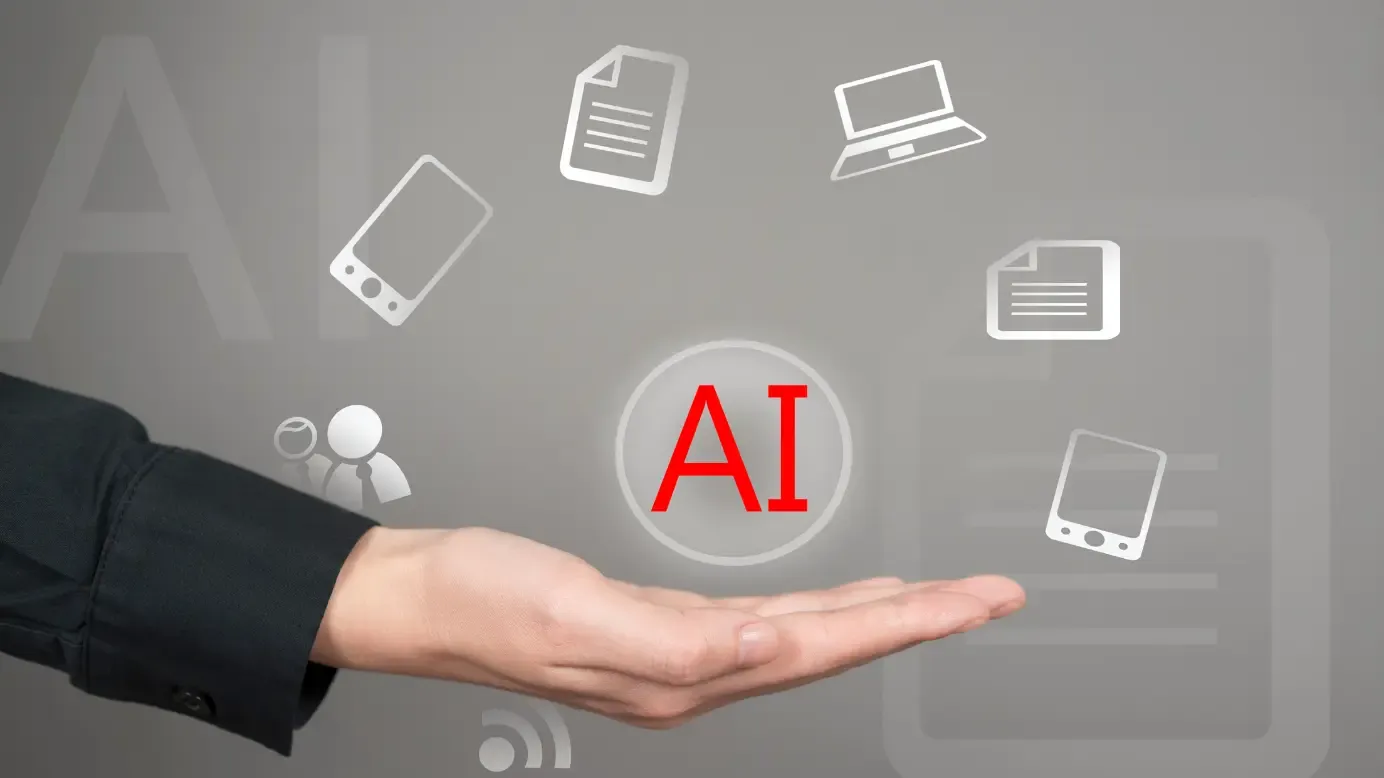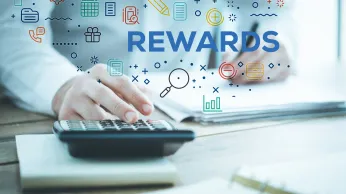AI in HR: Benefits, Tools & Future Trends for HR Professionals To Look For
Artificial intelligence in human resources (HR) is transforming the way companies manage recruitment, engagement, and performance. With AI tools for HR becoming more advanced, businesses are streamlining processes and boosting employee satisfaction.
Pada halaman ini
- What is Artificial Intelligence in HR?
- Faedah AI dalam meningkatkan pengalaman pekerja
- How is AI used in human resources?
- Top AI Tools for Human Resources in 2025
- Kajian kes kehidupan sebenar dan contoh AI dalam HR
- Challenges and ethical considerations when leveraging artificial intelligence in HR
- How Empuls supports AI-powered employee management (EM)
- Future of AI in HR: Trends and predictions
- Kesimpulan
- Soalan Lazim
AI (Kecerdasan Buatan) telah diramalkan akan mengubah hampir semua industri, termasuk Sumber Manusia. Beberapa syarikat utama, seperti Google dan pasukan sumber manusia dan pemerolehan bakat IBM, telah mula menggunakan AI dalam aliran kerja harian mereka untuk meningkatkan kecekapan dan produktiviti serta kekal di atas landskap digital yang sentiasa berkembang.
It has been reported that 76% of HR leaders believe that if they don't adopt HR practices in the next 1-2 years, they will not be as successful as the companies that have already incorporated AI technology.
Employees are the backbone of every company, and AI plays a huge role in enhancing the employee experience. AI has already been used in various aspects of employee management by supporting employees in learning and development and creating personalized upskilling programs based on their unique needs and preferences.
Alat AI juga boleh membantu dalam kesejahteraan pekerja, dengan alatan berbeza yang menawarkan cerapan berharga berkenaan beban kerja dan kesejahteraan keseluruhan pekerja.
AI memberi kesan ketara kepada HR dan boleh membantu membentuk semula banyak aspek industri. Menggabungkan AI ke dalam amalan HR mempunyai pelbagai faedah untuk kedua-dua syarikat dan pekerja.
Memandangkan kecerdasan buatan disepadukan ke dalam HR, pihak berkepentingan mengharapkan ia digunakan dengan cekap. Dengan banyak industri yang menerima AI untuk kerja yang lebih pantas dan cekap, syarikat mesti menyesuaikan diri dan berada di hadapan dalam persaingan.
What is Artificial Intelligence in HR?
AI in HR refers to implementing Machine Learning (ML), Natural Language Processing (NLP), and other AI technologies to automate human resources tasks and aid decision-making.
It allows for a data-based approach to talent acquisition, employee advancement, and retention that aims to reduce biases and enhance job seekers' and employees' experiences.
AI tools can assist HR teams in diverse areas, including employee records management, payroll processing, recruitment, onboarding, and performance management.
Until recently, human resources was viewed as a purely administrative department. HR analytics (which sprung up ever since the rise of the digital era) introduced a more evidence-based approach to managing people, including a data-driven model instead of intuition-based decision-making.
Model dipacu data melibatkan pengumpulan dan menganalisis data HR seperti kadar pusing ganti pekerja, ketidakhadiran dan demografi kakitangan untuk memahami corak dan membantu membuat keputusan penting dalam sumber manusia.
However, with the gradual passing of time and the introduction of advanced data analytics and AI tools, the role of HR has evolved. HR departments today use data more strategically to make better decisions, predict future trends, and contribute to organizational performance and growth.
Because of this, organizations now acknowledge HR as an effective strategic partner that can help shape business strategy and gain a competitive edge.
Interestingly, 81% of HR leaders are exploring AI to improve organizational efficiency, and 93% use AI tools to reduce organizational costs. One of the top barriers for 37% of HR Managers implementing AI is the lack of integration into the existing systems.
While traditional AI applications have streamlined HR tasks, generative AI is revolutionizing the field by enabling the creation of new content and insights. According to McKinsey, generative AI offers significant value in HR through:
- Content creation: Automating the development of job postings and personalized candidate communications.
- Data summarization: Extracting insights from unstructured data to enhance performance management.
- Employee engagement: Utilizing AI-driven chatbots to provide personalized learning recommendations.
- People analytics: Analyzing large datasets to predict attrition and inform workforce planning.
These are only few applications of AI that can lead to the substantial efficiency gains and more informed decision-making in HR functions.
Faedah AI dalam meningkatkan pengalaman pekerja
Terdapat pelbagai faedah yang boleh dicapai oleh pasukan HR daripada menggunakan AI untuk meningkatkan pengalaman pekerja. Beberapa faedah penting termasuk:
1. Memperkemas proses pengambilan
AI algorithms can effectively analyze vast candidate data, enhancing the recruitment process's speed and accuracy. AI can also provide more objective candidate evaluation, which can help reduce unconscious biases and ensure a fair selection process. It removes human error and subjective decision-making, which fosters fairer hiring practices.
AI juga berpotensi untuk menilai tingkah laku tempat kerja calon melalui teknik analisis lanjutan, yang boleh membantu mengenal pasti yang paling sesuai untuk organisasi. AI juga boleh membantu meramalkan keperluan tenaga kerja masa hadapan dengan menganalisis strategi organisasi, arah aliran pasaran dan data prestasi.
2. Meningkatkan onboarding
AI can help automate the daily onboarding tasks and allows HR teams to focus on the strategic side of things. AI can also help create a personalized onboarding experience, as it will be tailored to each employee's individual needs, enhancing their initial engagement and allowing them to integrate seamlessly into the company's culture. By quickly setting up your accounts and offering personalized training programs, AI-driven systems help speed up the recruitment and onboarding process.
3. Meningkatkan penglibatan pekerja
Alat AI boleh menjejaki matlamat dan prestasi pekerja secara berterusan serta memberikan maklum balas segera. Dengan mewujudkan matlamat yang jelas dan boleh diukur, AI juga menggalakkan penilaian prestasi yang tidak berat sebelah.
AI can also analyze performance data to help predict future performance trends, which supports successful planning and talent management. AI-automated performance management can also lead to enhanced productivity and better results.
4. Strategic workforce planning enhanced by AI
AI facilitates strategic workforce planning by analyzing current workforce capabilities and predicting future talent needs. Through data-driven insights, HR can identify skill gaps, forecast turnover rates, and develop targeted recruitment strategies.
For instance, AI can assess the impact of emerging technologies on job roles, enabling proactive reskilling programs. This strategic approach ensures that organizations remain agile and prepared for future workforce challenges.
How is AI used in human resources?
Artificial Intelligence (AI) is transforming human resources by automating repetitive tasks, improving decision-making, and enhancing employee experiences. HR departments are leveraging AI to streamline their operations and create more personalized, efficient, and data-driven processes.
From recruitment to employee retention, AI is helping HR professionals focus on strategic initiatives that drive business growth. Here are some common applications of AI in human resources:
- Recruitment and talent acquisition: AI automates resume screening, candidate ranking, and job matching using algorithms and predictive analytics.
- Employee engagement and support: Chatbots and virtual assistants provide real-time assistance and support, improving employee satisfaction and productivity.
- Onboarding and training: AI tools generate personalized onboarding experiences and recommend learning paths tailored to individual roles and goals.
- Performance management: AI analyzes performance data to offer objective feedback and identify high-potential employees for succession planning.
- Workforce planning: Predictive analytics help HR teams forecast hiring needs, detect flight risks, and optimize workforce strategies.
- Diversity and inclusion: Natural language processing (NLP) detects biases in job descriptions and promotes inclusive language to attract diverse candidates.
- Policy and content creation: Generative AI tools help create consistent, data-backed HR documents, such as job descriptions, training manuals, and performance summaries.
With these applications, AI is reshaping the future of work by empowering HR teams to be more agile, proactive, and employee-centric.
Top AI Tools for Human Resources in 2025
Alat dan teknologi AI kini digabungkan ke dalam amalan HR untuk meningkatkan kecekapan, penglibatan pekerja dan hasil perniagaan yang diingini. Beberapa alat dan teknologi AI penting yang disertakan dalam HR termasuk:
1. Chatbots dan pembantu maya
AI chatbots are virtual assistants that use artificial intelligence to support and assist employees. These chatbots can answer frequently asked questions, provide insights about the company's policies, and assist with basic HR tasks and inquiries. AI chatbots can help streamline employee support processes, lessen response times, and enhance employee satisfaction.
Pembantu Maya yang dikuasakan oleh AI boleh membantu jabatan HR dengan pelbagai tugas, seperti menjadikan pekerjaan mereka lebih cekap dan berkesan. Mereka juga boleh membantu mengautomasikan tugas HR yang berulang seperti onboarding, cuti dan pentadbiran faedah.
They can also offer personalized recommendations to employees regarding career development, performance management, and other training opportunities. Virtual assistants can also allow HR specialists to focus on more strategic tasks and enhance employee engagement.
2. Predictive analytics
Penyelesaian analitik ramalan menggunakan algoritma AI untuk memeriksa data pekerja dan memerhati orang yang mempunyai potensi yang lebih tinggi untuk berjaya dalam peranan mereka. Kaedah-kaedah ini juga boleh meramalkan kejayaan masa hadapan dengan mengambil kira prestasi dan pembolehubah trajektori kerjaya sebelumnya.
By identifying high-potential candidates, companies can focus their development efforts and offer progress in the company. Predictive analytics can aid succession planning by identifying prospective talent within the organization.
Memanfaatkan analitik ramalan boleh membawa kepada perancangan tenaga kerja yang lebih baik. AI boleh mengenal pasti corak dan arah aliran dengan menganalisis sejumlah besar data, membolehkan perniagaan membuat keputusan yang lebih bijak mengenai pengambilan pekerja dan perancangan penggantian. Analitik ramalan juga boleh mengenal pasti potensi risiko penerbangan, membolehkan jabatan HR membangunkan strategi untuk membantu mengekalkan bakat terbaik dengan berkesan.
3. Pemprosesan bahasa semula jadi (NLP)
HR professionals use NLP techniques to analyze employee and candidate data, emails, resumes, and feedback. NLP algorithms analyze unstructured text data to utilize valuable information, including sentiment analysis, personality traits, and competency.
Ini boleh membantu pasukan HR dalam membuat keputusan pengambilan pekerja dan pengekalan bakat serta meningkatkan motivasi pekerja. NLP juga boleh mengautomasikan proses HR seperti saringan resume, analisis maklum balas pekerja dan kedudukan calon.
Profesional HR boleh menggunakan NLP untuk mengimbas resume dan mencari calon yang sesuai untuk pekerjaan itu. Algoritma NLP mengekstrak kata kunci dan frasa, memadankannya dengan huraian kerja dan meletakkan kedudukan calon berdasarkan kelayakan mereka.
NLP juga boleh digunakan untuk analisis sentimen, yang boleh digunakan untuk mengenal pasti sejauh mana calon akan sesuai dengan budaya syarikat. Algoritma NLP juga boleh mengenal pasti berat sebelah dalam siaran kerja dan menggunakan bahasa inklusif untuk meningkatkan kepelbagaian dalam kumpulan calon.
4. AI Centers of Excellence (CoE) in HR
Establishing an AI Center of Excellence (CoE) within HR departments serves as a centralized body to oversee AI initiatives. The CoE is responsible for setting best practices, ensuring compliance with ethical standards, and facilitating knowledge sharing across the organization.
By having a dedicated team focused on AI, HR can more effectively integrate AI tools for human resources, drive innovation, and maintain consistency in AI applications.
5. Generative AI (GenAI) in HR
Generative AI (GenAI) is revolutionizing HR by enabling the creation of content such as job descriptions, training materials, and policy documents. HR departments are leveraging GenAI to automate repetitive tasks, allowing professionals to focus on strategic initiatives.
For instance, GenAI can generate personalized onboarding materials tailored to individual roles, enhancing the new hire experience. Additionally, it aids in drafting performance review summaries by analyzing employee data, ensuring consistency and objectivity.
Kajian kes kehidupan sebenar dan contoh AI dalam HR
Mari kita semak beberapa contoh kehidupan sebenar tentang cara beberapa syarikat terkemuka dunia telah memasukkan AI ke dalam amalan HR mereka dan cara strategi ini telah menyediakan mereka untuk berjaya.
1. Unilever's AI-powered recruitment
Unilever's HR department has replaced conventional hiring with digital interviews and AI-powered online assessments. This unique approach also expands the talent pool by enhancing diversity and inclusivity.
It also reduces unconscious biases, which ensures a fair and objective selection process. This has resulted in a more efficient hiring process that aligns with the demands and expectations of the modern talent pool.
2. Penglibatan pekerja yang didorong oleh AI Hilton
Hilton has implemented AI-driven strategies to enhance employee engagement. These strategies aim to improve the employee experience, increase productivity, and reduce turnover rates. By implementing AI, Hilton saw an opportunity to enhance human connection and responsiveness in the application and interview process.
Pemimpin HR melihat kuasa AI untuk mengurangkan masa yang diperlukan untuk mengisi kekosongan jawatan, meningkatkan dan menambah baik pengalaman calon serta mengurangkan beban kerja pentadbiran perekrut. Ini membawa kepada penciptaan Ally, chatbot untuk calon masuk, yang ditemui di tapak kerjaya Hilton.
Hilton juga menggunakan AI untuk temu bual dan penilaian video, yang menghasilkan Skor Promoter Bersih sebanyak 85 dan meningkatkan kadar pengambilan temu duga. Menggunakan Ally, pekerjaan yang anda mohon dihantar ke telefon anda dengan pautan untuk melengkapkan permohonan kerja Hilton anda dalam masa kurang daripada satu minit, yang agak mengagumkan.
3. Analisis Watson IBM dalam HR
IBM Watson Orchestrate is an AI-powered tool that allows HR professionals to automate routine HR tasks, analyze data, and make better business decisions. It uses Natural Language Processing (NLP) to draw from prebuilt and custom skills to implement functions specific to human resources processes by integrating with applications that your HR department already relies on.
Profesional TA boleh menggunakan Orkestra untuk mengautomasikan tugas yang memakan masa seperti mendapatkan dan merekrut calon, membolehkan mereka menumpukan masa dan tenaga mereka pada aspek pengambilan yang lebih strategik. Ini telah meningkatkan produktiviti untuk profesional HR, yang membawa kepada pengambilan yang lebih baik untuk calon yang luar biasa.
Orkestra juga membantu mengautomasikan tugas perolehan manual, yang menjimatkan masa berharga IBM untuk merancang inisiatif strategik dan memenuhi keperluan dan keperluan pelanggan. Onboarding memerlukan perhatian manusia dan banyak kertas kerja. Watson IBM mengautomasikan proses yang memakan masa ini dan dengan lancar memperkenalkan calon baharu kepada syarikat itu.
Dengan memunggah tugasan ini kepada Orkestra, pasukan HR boleh memberi tumpuan dan menyampaikan pendekatan berpaksikan manusia yang lebih berkesan untuk syarikat dan pekerja.
Challenges and ethical considerations when leveraging artificial intelligence in HR
Although there are many benefits that artificial intelligence offers to HR teams, there are still some challenges and ethical considerations that you need to be aware of when incorporating AI in HR practices. Some critical factors to consider include:
1. Privasi dan keselamatan data
Dengan keperluan dan penggunaan AI yang semakin meningkat dalam amalan HR, terutamanya apabila mengendalikan data pekerja dan calon yang sensitif, terdapat kebimbangan yang semakin meningkat mengenai privasi data dan keselamatan siber. Syarikat mesti menyimpan data pekerja mereka secara sensitif dan berhati-hati serta mematuhi peraturan perlindungan data seperti GDPR dan CCPA.
Walaupun penggunaan AI dalam HR semakin meningkat, ramai pemimpin HR mempunyai kebimbangan mengenai ketepatannya. Mereka juga bimbang dengan jaminan bahawa data sensitif yang ditawarkan oleh pekerja dan calon tidak digunakan untuk latihan lanjut model AI, akhirnya menjejaskan privasi dan keselamatan mereka.
HR departments need to implement robust cybersecurity measures, like investing in a Remote access VPN, using reliable antivirus software, and using multi-factor authentication to maintain trust, protect employees' confidential information, and ensure they're protected from potential data breaches.
2. Bias dan adil dalam AI
One of the most significant drawbacks of using AI is the bias during the hiring process. The US Equal Opportunity Employment Commission announced in May last year that employers using AI tools can be liable for discriminatory hiring practices. HR leaders need to ask specific questions during the software purchasing process and ensure they are aware of any potential biases.
Algoritma AI boleh mengekalkan berat sebelah sosial dalam data yang mereka latih. Berhati-hati terhadap potensi keluaran diskriminasi berdasarkan jantina, bangsa, umur dan ciri sensitif yang lain.
Jika data yang digunakan untuk melatih model AI mempunyai berat sebelah, maka berat sebelah ini boleh diteruskan dalam proses membuat keputusan. Ini boleh membawa kepada amalan pengambilan pekerja yang diskriminasi dan peluang yang tidak sama rata untuk pekerja daripada pelbagai latar belakang.
3. Satu-saiz-muat-semua penyelesaian
Sistem HR dipacu AI boleh menawarkan penyelesaian standard untuk isu jabatan HR yang paling biasa. Walaupun ini boleh membantu meningkatkan kecekapan, ia juga membawa kepada kekurangan sokongan individu untuk keperluan dan keperluan peribadi pekerja.
Setiap pekerja membawa kekuatan, kelemahan dan pengalaman mereka sendiri ke tempat kerja. Hanya bergantung pada AI untuk mengurus prestasi dan pembangunan pekerja boleh menghalang sentuhan dan hubungan manusia yang diperlukan untuk memahami dan memupuk bakat terbaik.
4. Emphasis on human-centered AI approaches
Adopting a human-centered approach to AI in HR ensures that technology serves to augment human decision-making rather than replace it. This involves designing AI systems that are transparent, explainable, and aligned with human values.
For example, AI-driven recruitment tools should provide insights into their decision-making processes, allowing HR professionals to understand and trust the outcomes. By focusing on human-centered AI, organizations can foster greater acceptance and effective utilization of AI tools for human resources.
5. Navigating AI-induced workforce disruptions
The introduction of AI in HR processes may lead to workforce disruptions, including changes in job roles and required skill sets.
Organizations must proactively manage these transitions by communicating changes, providing reskilling opportunities, and involving employees in the transformation process. By addressing potential disruptions head-on, companies can mitigate resistance and foster a culture of adaptability.
How Empuls supports AI-powered employee management (EM)
As HR teams increasingly turn to artificial intelligence for smarter and faster decision-making, Empuls stands out as a powerful platform that bridges AI with employee management (EM) to create more engaged, productive, and satisfied workforces. Empuls doesn’t just streamline processes—it enhances the entire employee lifecycle, making it a valuable addition to any HR tech stack embracing AI.
1. Automating employee engagement with intelligent nudges

Empuls uses AI-powered nudges and personalized notifications to drive participation in engagement programs. Whether it’s pulse surveys, recognition events, or wellness challenges, the platform ensures that employees stay informed and motivated through timely reminders. This automation reduces manual follow-ups and ensures consistent engagement across teams.
2. Using analytics to improve employee experience

Empuls provides real-time dashboards and sentiment analysis based on employee feedback, surveys, and interactions. With built-in analytics, HR leaders can identify patterns in engagement, burnout risk, and recognition trends. These insights empower organizations to make data-driven decisions to retain top talent and elevate morale.
3. Enabling continuous recognition and rewards

Recognition is a key pillar of employee management, and Empuls automates this with AI-driven suggestions and reward triggers. For example, if an employee reaches a milestone or consistently exceeds performance goals, Empuls can automatically prompt managers to recognize and reward them through digital badges, gift cards, or custom awards.
This fosters a culture of continuous appreciation, boosts motivation, and aligns with the broader AI-driven approach to HR.
4. Personalizing employee communication at scale

AI in HR thrives on personalization, and Empuls leverages this by delivering tailored internal communications to employees based on their behavior, location, and preferences. Whether it's onboarding information, learning modules, or wellness updates, the right message is delivered to the right person at the right time—without HR teams needing to micromanage every message.
This enhances the employee communication experience, a critical component of AI-led EM strategies.
5. Supporting strategic HR planning with feedback insights

With Empuls, HR teams can conduct pulse surveys, lifecycle feedback, and eNPS measurements with ease. The platform uses AI to categorize and summarize open-ended responses, helping HR teams quickly interpret employee sentiment and act on it. This feedback loop is essential for shaping talent strategies and planning workforce interventions proactively.
Whether you're aiming to reduce attrition, drive engagement, or improve your employer brand, Empuls offers the AI-enabled infrastructure to support your goals and stay ahead of the competition. Schedule a call now to learn more!
Future of AI in HR: Trends and predictions
Masa depan HR dan kemajuannya berkait rapat dengan kecerdasan buatan. AI akan membantu mengubah amalan HR, membolehkan pengambilan, pemerolehan bakat dan pengurusan pekerja menjadi lebih cekap. Profesional HR kini boleh mengalami proses yang diperkemas dan menumpukan pada output dipacu data.
The integration of AI in HR has led to the creation of specialized roles aimed at managing and optimizing AI tools for human resources. Positions such as HR AI Product Managers and AI Ethics Officers are becoming increasingly common.
These roles are responsible for overseeing the deployment of AI solutions, ensuring ethical considerations are addressed, and aligning AI initiatives with organizational goals. By having dedicated professionals in these positions, companies can better navigate the complexities of AI implementation in HR.
Gartner reports that by 2025, "60% of enterprise organizations will adopt a responsible AI framework for their HR technology, and in turn, achieve a greater employee experience and trust in the organization."
Walau bagaimanapun, adalah penting untuk ambil perhatian bahawa AI tidak akan menggantikan keperluan untuk profesional HR. Perspektif dan pengalaman manusia memainkan peranan penting dalam sumber manusia, membolehkan syarikat berkembang maju dan berkembang. Itulah sebabnya syarikat mesti mencapai keseimbangan yang betul antara teknologi dan interaksi manusia untuk meraih faedah.
Kesimpulan
Alat dan penyelesaian AI boleh meningkatkan pengalaman pekerja dan meningkatkan pengekalan. Pekerja boleh menurunkan tugas pentadbir mereka yang berulang, memperkemas aliran kerja dan memperoleh kemahiran teknologi baharu.
Menggunakan AI untuk meningkatkan pengalaman pekerja membantu dalam kesejahteraan pekerja dan juga membantu organisasi membina reputasi yang baik. Alat AI boleh mencipta program latihan yang diperibadikan dan mengautomasikan tugasan manual dan berulang, membolehkan aliran kerja yang lancar, motivasi pekerja dan produktiviti.
Soalan Lazim
1. What is the role of AI in HR?
AI in HR streamlines and enhances tasks like recruitment, onboarding, performance management, and workforce planning. It helps automate repetitive processes, improve decision-making with data insights, reduce biases, and personalize employee experiences.
2. Can HR be replaced by AI?
No, AI cannot fully replace HR. While it automates tasks and boosts efficiency, the human touch in areas like employee relations, ethical decision-making, and organizational culture is irreplaceable. AI supports HR, but doesn’t eliminate the need for human professionals.
3. What companies use AI in HR?
Top companies using AI in HR include Unilever, Hilton, IBM, and Google. These companies leverage AI for recruiting, engagement, onboarding, and analytics, improving both operational efficiency and employee experience.
4. How much is AI used in HR?
AI usage in HR is rapidly increasing—81% of HR leaders are exploring AI to improve efficiency, and 93% use it to reduce costs. Its adoption spans various functions, with growing reliance on tools like chatbots, predictive analytics, and generative AI.













